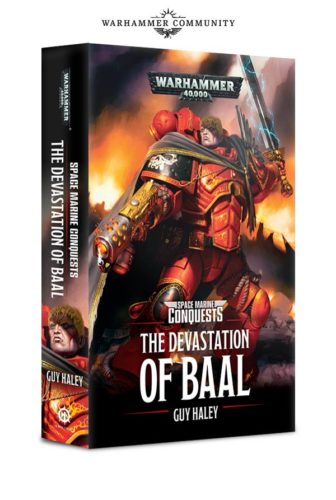Forging a narrative with home-brewed rules and more are in today's backstory article from the Warhammer Community.
Linking up backstory to our games are always fun and very exciting, but we often are left with no real satisfying method to create them. Of course the Black Library is a great way to really dig into the storyline of your factions.
via the Warhammer Community
https://www.warhammer-community.com/2018/02/14/forging-narrative-devastation-baalgw-homepage-post-3/
Between the core rulebook, Chapter Approved and an ever-growing set of codexes, the latest edition of Warhammer 40,000 is a toolbox for every kind of gamer. We’ve looked a lot at the variety of options available for matched play fans, but it’s important not to forget about the rich potential for narrative gaming the system provides. Indeed, Warhammer 40,000 isn’t just about victory – it’s about taking your place among the heroes and legends of one of the richest settings in the entire world.

The Devastation of Baal is one of the most exciting events in the recent history of Warhammer 40,000, a massive conflict that saw Hive Fleet Leviathan launch a full-scale assault on Baal following the destruction of the Cryptus System shield worlds. Had it not been for the unlikely arrival of the Indomitus Crusade and Roboute Guilliman (not to mention a somewhat vexed Ka-Bandha, who really has his heart set on being the one to destroy the Blood Angels), the Chapter would have almost certainly been annihilated. Indeed, it was the combined efforts of two of the Blood Angels’ more sinister successors – the Knights of Blood and the Flesh Tearers – which allowed them to hold out as long as they did.
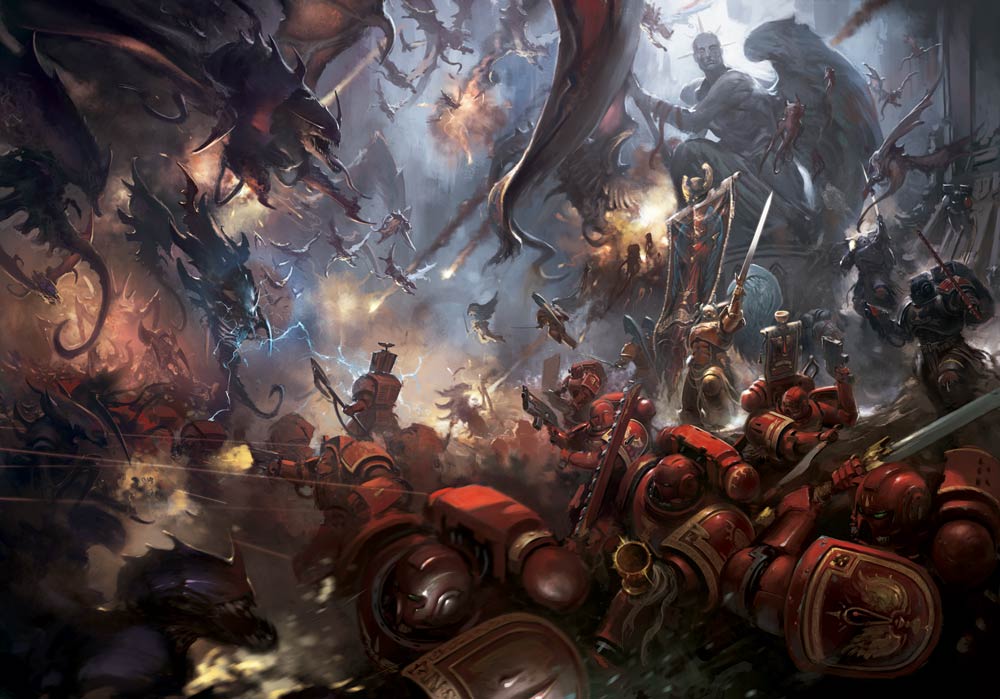
The Devastation of Baal is covered in superb detail in Guy Haley’s aptly-named The Devastation of Baal, which we’d recommend heartily if you’re a fan of the Blood Angels, or despise them and want to read about a lot of them getting eaten by xenos.
Such an epic conflict is absolutely begging to be played out on the tabletop – and thankfully, it’s pretty simple to do so.

While it’s tempting to go all-out and play this battle as an Apocalypse game, we think it’s more fun (and a lot faster!) to treat the battle on the tabletop as the smallest and most important section of a larger conflict.
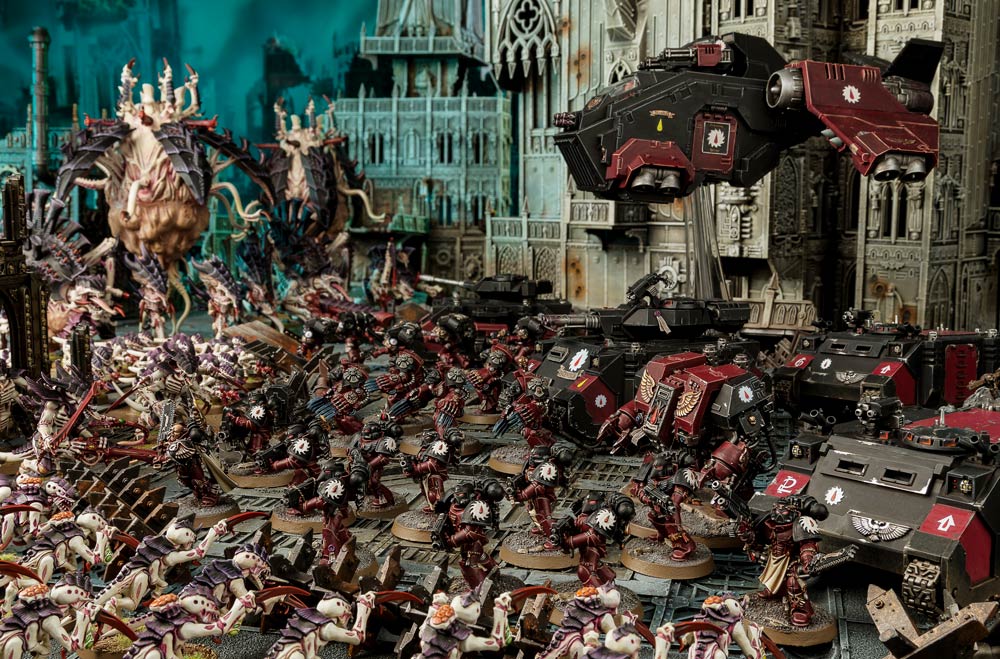
We’d pick All-Out Attack from Stronghold Assault in Chapter Approved as the best mission to represent the last stand of the scions of Sanguinius. This mission pits an entrenched defender against seemingly endless waves of foes, making it ideal for representing a much larger battle even if you don’t have that many models. Stronghold Assault also features a host of thematic Stratagems designed to represent the unequal balance of power between an attacker and a defender, such as Preliminary Bombardment or Ammo Store.

For the Blood Angels, we’d recommend splitting your army into three Detachments – one of First Founding Blood Angels, led by Commander Dante, one composed of Flesh Tearers, led by Gabriel Seth, and one composed of the Legion of the Damned. For thematic purposes, you’ll find it rewarding in this mission to field as many members of the Death Company as you can muster, representing the desperate measures employed by the Blood Angels in what seemed to be their final hour. Avoid using any Primaris units – at this point in history, they have yet to arrive on Baal!
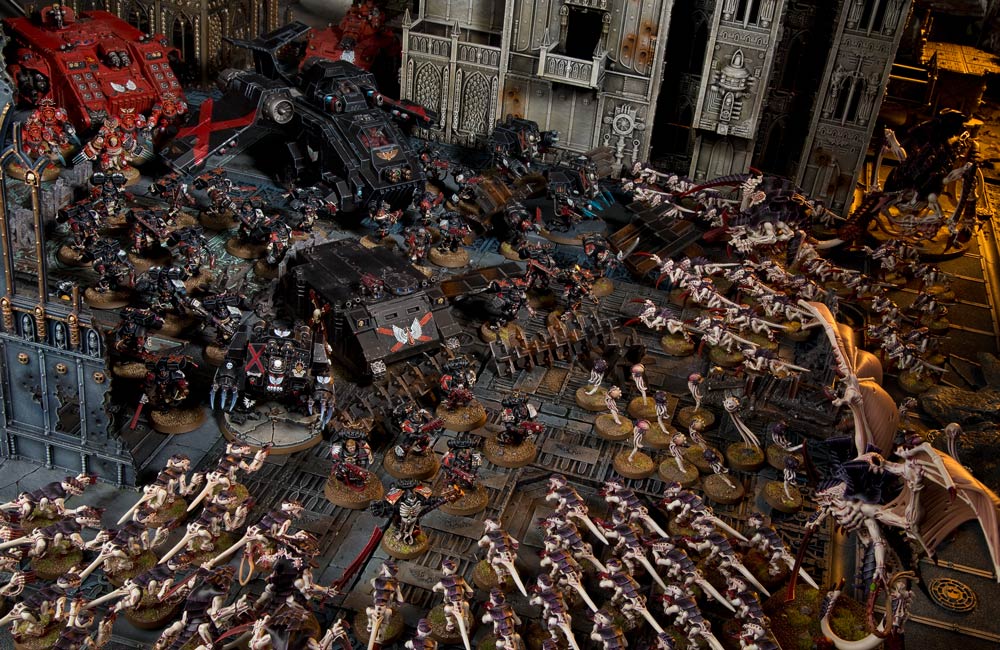
For the Tyranids, you’ll want to draw your army from Hive Fleet Leviathan. We’d recommend taking plenty of Hormagaunts and smaller creatures, adding to the cinematic feel of the game. You’ll also want to take the Swarmlord in your army – its climactic duel with Dante is one of the most exciting parts about the Devastation of Baal!
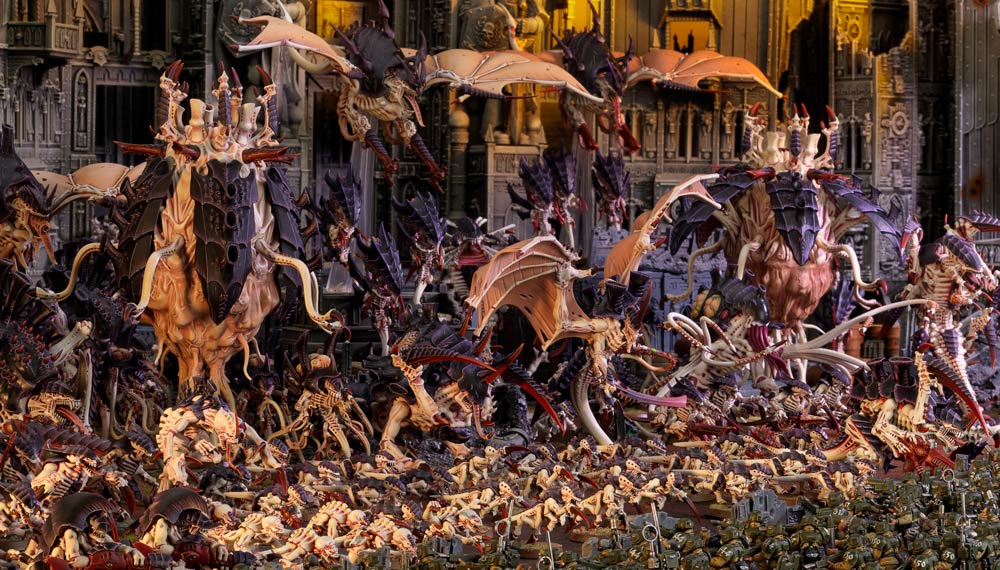
In general, the Tyranid player should have an army of a higher power level than the Blood Angels – this is, after all, a desperate final stand rather than a fair pitched battle. If the Tyranid player has a smaller collection than the Blood Angels player, worry not – just allow them to bring on destroyed units as ongoing reinforcements.

One of the really fun things about narrative play is that the rules are your playground. If you think something should work differently… well, go ahead! In this case, there are all sorts of measures you could take to ensure the mission feels as dramatic and as true to the Devastation of Baal as possible.
Firstly, we’d recommend letting Dante resurrect with D6 wounds the first time he falls in battle – this represents his mysterious return to life following a vision in his dying moments of Sanguinius himself.
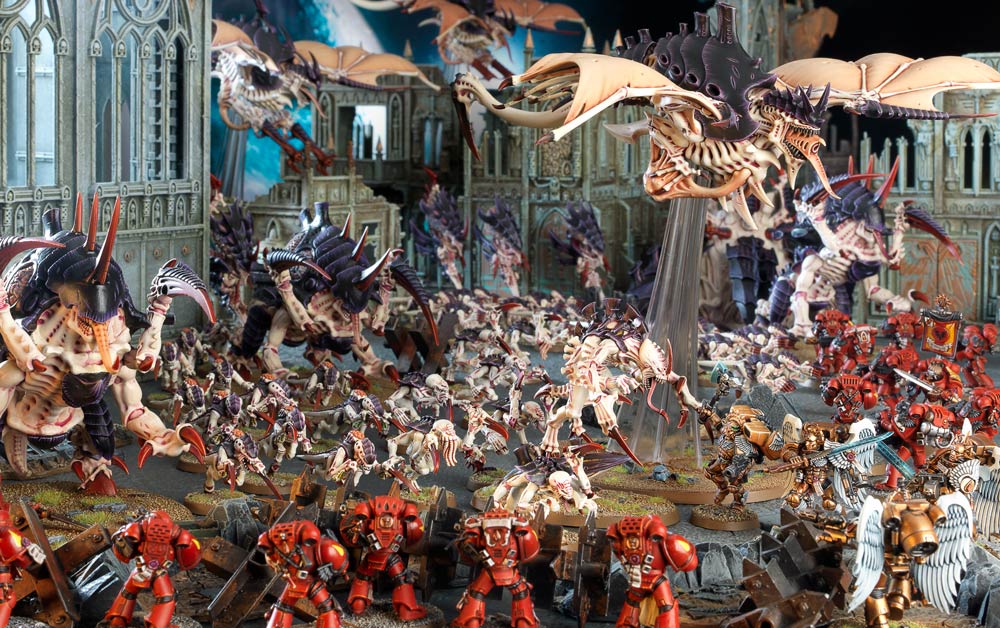
Secondly, you may want to ignore failed Morale tests for the Blood Angels in this mission – after all, there’s nowhere left to run, and these warriors are fighting for the fate of their Chapter!

The scenario as we’ve listed it here works well for two players, but if you’ve got a couple of friends, you could take things much further. One of the most interesting elements of the Devastation of Baal is the involvement of the Daemons of Khorne, under Ka’Bandha – perhaps you could introduce a third, neutral player whose aim is to destroy the Blood Angels before the Tyranids do. Alternatively, you could play past the 6th turn of the mission and have a force of Primaris Space Marines, led by Roboute Guilliman, deploy to the board, with the new aim being to wipe the Tyranids out entirely.
Alternatively, if you’re looking for something a little more grimdark, Gabriel Seth’s final defence of Baal Primus with the Knights of Blood would be another scenario you could play with this mission – with the entire Knights of Blood Chapter falling to the Black Rage at the end of the mission. If you’re feeling particularly ambitious, you could run the entire Baal Campaign using these rules.


